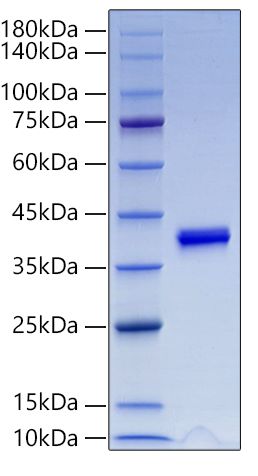Insulin-like growth factor I, also known as somatomedin C, is the dominant effector of growth hormone and is structurally homologous to proinsulin. Mouse IGF-I/IGF-1 is synthesized as two precursor isoforms with alternate N- and C-terminal propeptides . These isoforms are differentially expressed by various tissues. The 7.6 kDa mature IGF-I/IGF-1 is identical between isoforms and is generated by proteolytic removal of the N- and C-terminal regions. Mature mouse IGF-I/IGF-1 shares 94% and 99% aa sequence identity with human and rat IGF-I/IGF-1, respectively, and exhibits cross-species activity. It shares 60% aa sequence identity with mature mouse IGF-II/IGF-2. Circulating IGF-I/IGF-1 is produced by hepatocytes, while local IGF-I is produced by many other tissues in which it has paracrine effects . IGF-I induces the proliferation, migration, and differentiation of a wide variety of cell types during development and postnatally . IGF-I regulates glucose and fatty acid metabolism, steroid hormone activity, and cartilage and bone metabolism . It plays an important role in muscle regeneration and tumor progression. IGF-I binds IGF-I R, IGF-II R, and the insulin receptor, although its effects are mediated primarily by IGF-I R. IGF-I association with IGF binding proteins increases its plasma half-life and modulates its interactions with receptors.







